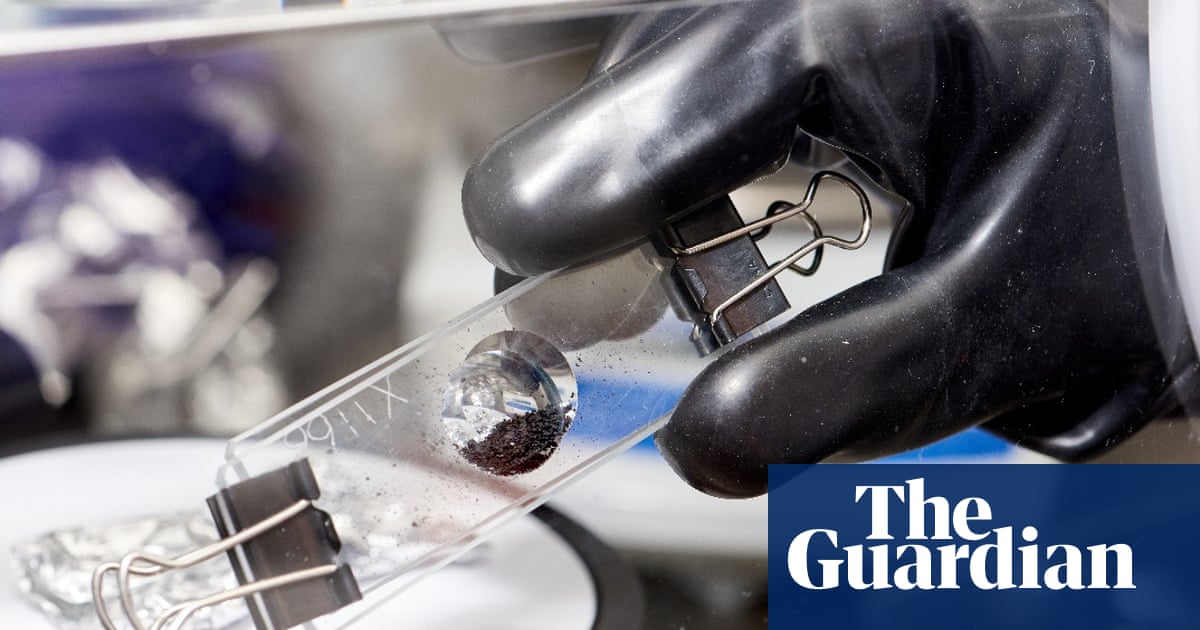- cross-posted to:
- unitedkingdom@feddit.uk
- cross-posted to:
- unitedkingdom@feddit.uk
“It’s amazing. It’s like a little treasure trove that takes us back to the start of the solar system,” said Dr Ashley King, a planetary scientist who will work on the grains at the museum. “I can’t wait to get my hands on them and see what we can learn about the early solar system.”
… are ecstatic because they discovered …
well, nothing yet.This is the best summary I could come up with:
A teaspoon’s worth of dark dust and granules scooped from an asteroid 200m miles from Earth has arrived at the Natural History Museum in London, where scientists are preparing to unlock its secrets.
Researchers at the museum received 100mg of the pristine material, which at 4.6bn years old dates back to the dawn of the solar system, after Nasa’s Osiris-Rex mission stopped at asteroid Bennu in 2020 and returned samples to Earth in September.
The spacecraft briefly touched down on Bennu, an asteroid that has a 1-in-1,750 chance of colliding with Earth in the next 300 years, and gathered more than 60g of untouched material, the largest amount brought back from space since the Apollo program.
Scientists expect to study the samples for decades as they seek to understand how the solar system formed and whether asteroids delivered substantial amounts of water to Earth and other planets.
The first two years of research at the Natural History Museum will focus on non-destructive tests, such as X-ray diffraction and electron microscopy to learn about Bennu’s mineral composition and structure.
The museum is home to one of the world’s leading meteorite collections, and the staff are well-used to handling small amounts of extremely precious materials from outer space.
The original article contains 498 words, the summary contains 206 words. Saved 59%. I’m a bot and I’m open source!




